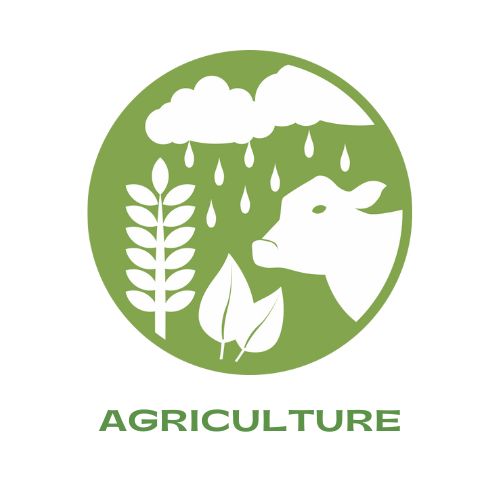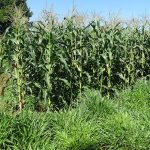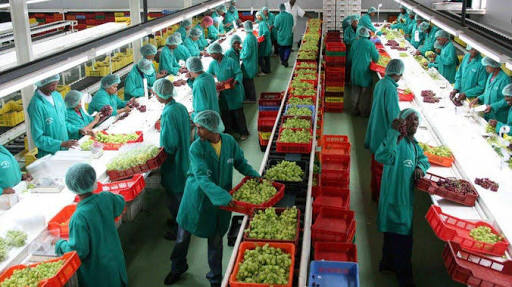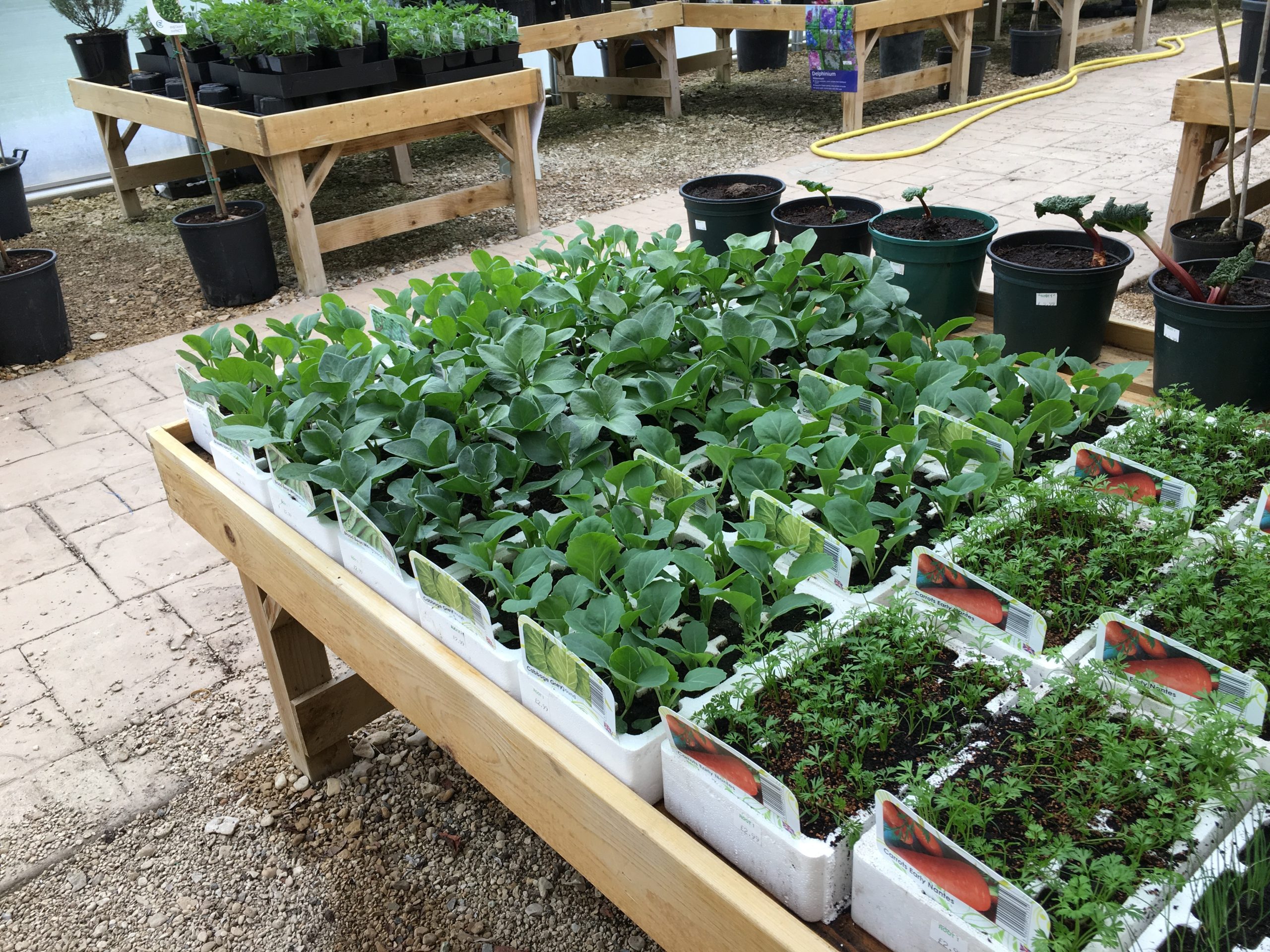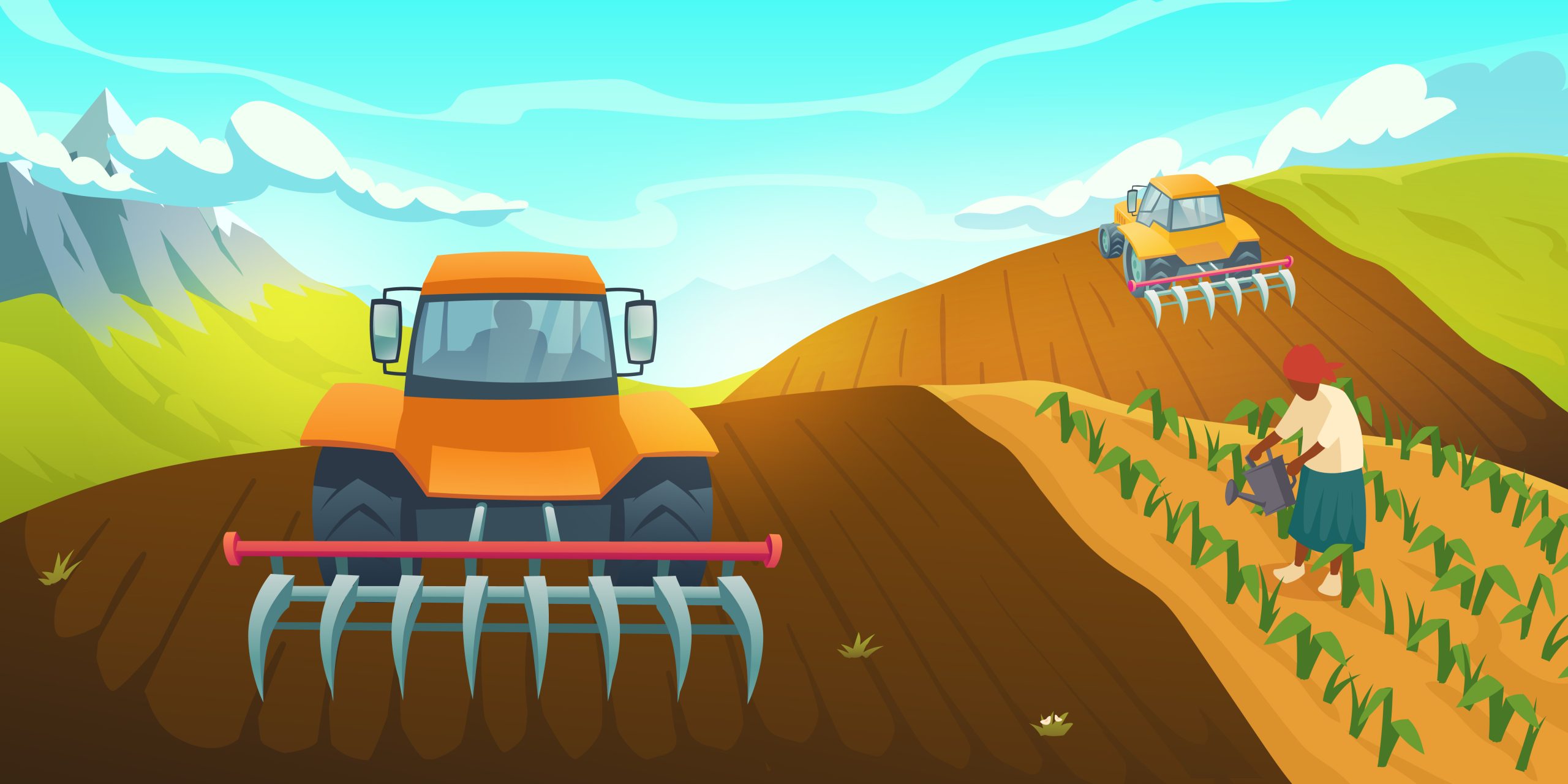In Kenya’s vast agricultural landscape, technology is rapidly transforming the way farmers cultivate, manage, and harvest their crops. At the epicenter of this agrarian revolution is the burgeoning Agricultural Technology (AgTech) market segment that is ushering a new era of innovation, efficiency, and sustainability in the country’s agriculture.
This comprehensive blog post explores Kenya’s fertile AgTech ecosystem and how it is planting the seeds for an abundant agricultural future.
The AgTech Revolution in Kenya
Agricultural technology encompasses a wide range of advanced solutions that leverage cutting-edge science and innovative engineering to optimize crop yields, reduce waste, and enhance sustainability across the agricultural value chain. In Kenya, AgTech is proving to be a potent catalyst that is helping drive the nation’s agricultural transformation.
Kenya’s tryst with agricultural technology began in the 1960s, when the first hybrid maize varieties were introduced to boost yields. However, the diffusion of agricultural innovations remained slow for decades due to infrastructural constraints, limited research, and low technology penetration among smallholder farmers who own 80% of the country’s arable land.
The tide started turning in the 2000s, as rapid mobile penetration opened new digital pathways for disseminating agronomic information, facilitating credit access, and creating market linkages. The proliferation of mobile-enabled services set the stage for the rise of a vibrant AgTech ecosystem that is now at the forefront of pushing the frontiers of agricultural innovation in Kenya.
Today, AgTech solutions are helping farmers across Kenya gain greater control over crop health, make informed decisions, reduce waste, increase productivity, access new markets, obtain financing, and build climate resilience. By providing real-time data, predictive analytics, and actionable insights, AgTech is proving instrumental in creating a more efficient, sustainable, and profitable agricultural system.
Key Players and Innovators
Kenya’s flourishing AgTech landscape encompasses startups, established companies, non-profits, and public research institutions that are developing and deploying technology-driven solutions tailored for smallholder farmers.
Among the startups at the cutting edge of AgTech in Kenya is SunCulture, which leverages solar-powered irrigation systems and remote monitoring to help farmers optimize water usage and improve yields. Other innovators like DigiFarm and Agri-Wallet have built digital platforms and mobile apps designed to give farmers customized recommendations on crops, facilitate access to inputs and credit, and provide market linkages.
On the livestock side, Copia Global uses predictive analytics to help dairy farmers track milk production and fertility cycles while iProcure offers a digital supply chain platform to connect pastoralists to veterinary products and buyers. In the field of agricultural analytics, startups like Lentera and Anthropic are applying machine learning and artificial intelligence to extract insights from farm data.
Established private sector players such as Safaricom, Twiga Foods, and Elanco are also accelerating AgTech adoption by building digital and data infrastructure like mobile money platforms, digital procurement systems, and animal identification and diagnostics tools.
Public research institutions like the Kenya Agriculture and Livestock Research Organization (KALRO) have been pivotal in developing innovations like the KALRO App that provides hyperlocal farming recommendations to farmers. Academic institutions such as the University of Nairobi and Jomo Kenyatta University of Agriculture and Technology are also nurturing young AgTech talent through partnerships with startups and relevant courses.
These diverse players are collaborating in public-private partnerships to co-create solutions centered on farmers’ needs and bridge the gap between pioneering technology and practical implementation on the farm.
Technological Innovations
A wide gamut of emerging technologies is driving innovation in Kenya’s AgTech sector.
Mobile applications have emerged as a popular way for AgTech ventures to directly engage farmers through interactive platforms that incorporate crop calendars, advisory services, weather updates, and market price discovery features. About 33% of Kenya’s 51 million population subscribe to mobile internet, and improving digital literacy is poised to expand the reach of mobile AgTech solutions.
Internet of Things (IoT) devices like low-cost automated weather stations, remote soil sensors, and livestock biometrics trackers are generating real-time data on farm conditions. This data powers predictive analytics applications to guide precision agriculture, livestock management and smart greenhouses.
Satellite imagery, drones, and AI are being combined to enable advanced agricultural analytics like hyperlocal weather forecasts, early pest and disease detection as well as insights on optimal sowing periods, irrigation needs and fertilizer application. For instance, Doten, a Kenyan startup, uses satellite data to provide farmers with AI-enabled insights on crop risks.
Kenya’s widespread mobile money services like M-Pesa are also enabling a fintech revolution with digital credit platforms like FarmDrive assessing creditworthiness using mobile farming data and alternative scoring models to extend financing to smallholders.
These innovations demonstrate how emerging technologies can be tailored to address contextual agricultural challenges and meet the needs of small-scale farmers across Kenya.
Market Dynamics
Kenya’s AgTech market is recording remarkable growth, driven by surging technological penetration, rising uptake by agribusinesses and farming communities, and increased investor interest.
Valued at $450 million in 2020, Kenya’s AgTech market is projected to grow at an annual rate of 12% to reach $1 billion by 2025, according to Disrupt Africa. AgTech startups raised about $19 million in funding in 2020, representing a 39% year-on-year growth.
Demand for AgTech solutions has risen among Kenya’s 5 million smallholder farmer households who are looking to modernize production. Large agribusinesses are also adopting digital tracing, smart logistics, and data-based advisory services to enhance efficiency.
This market adoption has supported Kenya’s agricultural productivity gains. Precision agriculture and digitally-enabled services are estimated to have contributed to a 30% increase in the country’s cereal yields between 2015-2020.
The flourishing ecosystem has caught the eye of investors and development partners such as USAID, FAO, and Mastercard Foundation who are actively supporting startups through financing and capacity building programs like Feed the Future, Youth in Agribusiness, and One Million Farmers Platform.
With agriculture contributing about 34% to GDP, Kenya’s AgTech segment is poised for robust growth as a key pillar of the government’s national digitization and food security goals.
Impact on Smallholder Farmers
A lynchpin of Kenya’s AgTech market growth is its focus on boosting the productivity and incomes of smallholder farmers who produce 70% of the nation’s agricultural output.
Greater access to data-driven agronomic insights is enabling smallholders to obtain higher, more predictable yields. Land O’Lakes’ Agritools digital advisory platform, for instance, helped Kenyan maize farmers achieve on average 2.4 metric tonnes per acre, nearly double the national average.
Digital credit products like Apollo Agriculture’s financing packages are designed with flexible repayment models aligned with crop harvests cycles, expanding credit access for smallholders. Kenya’s vibrant mobile money ecosystem has been pivotal in enabling digital transactions.
Digital marketplaces like Twiga Foods, DigiFarm, and Pesabase are helping farmers sell produce to buyers more efficiently at fair prices while reducing post-harvest losses. About 80 tonnes are sold daily via Twiga’s platform, increasing market access.
These innovations have translated into improved livelihoods across Kenya’s smallholder communities. Adoption of AgTech services is associated with an estimated 10-30% income rise by supporting yields and access to inputs, credit and buyers.
As Kenya’s AgTech ecosystem continues to unlock data-driven solutions tailored to smallholders’ needs, it is poised to drive greater financial inclusion and productivity gains.
Challenges and Barriers
While Kenya’s AgTech segment is rapidly evolving, structural challenges persist in scaling innovations and driving technology adoption among smallholder farmers.
Kenya’s agricultural technology penetration rate stands at 33%, trailing regional leaders like South Africa. Infrastructural limitations like power shortages and limited internet connectivity hamper the reach of AgTech solutions, especially in rural areas.
Low digital literacy also hinders adoption, with studies indicating just 24% of farmers in Kenya access agricultural information online. Affordability of data plans has been a constraint too.
Many smallholders lack the skills and capacity to interpret complex data analytics and troubleshoot tech issues. Customizing platforms to Kenya’s local contexts and languages remains an uphill task. Gender inequalities also mean women farmers have less access to technology.
Concerns around data privacy, transparency, and fair compensation for farmers’ data have also been raised and need regulatory guidance.
Tackling these barriers will require integrated efforts like expanding digital infrastructure in rural areas, enhancing farmers’ digital skills, enacting data protection policies, and building local language interfaces. Only a holistic approach can unlock AgTech’s potential in Kenya.
Government Support and Policies
Recognizing AgTech’s immense potential, the Kenyan government has implemented various initiatives and policies to catalyze innovation and build a conducive ecosystem.
Under its Digital Economy Blueprint, the administration aims to reach 6 million farmers with digital agriculture solutions by 2023. State agencies like the ICT Authority and Kenya Investment Authority are undertaking promotional programs to attract capital and talent into the AgTech space.
New regulations around data protection, cybersecurity and digital transactions are also being formulated to address emerging concerns and encourage innovation. Tax incentives for tech firms have been expanded.
The government is upgrading rural infrastructure through initiatives like the Digital Literacy Program and Konza Techno City to improve farmers’ access to digital services. Public-private partnerships are being forged to amplify the outreach of platforms like iShamba and e-Voucher that provide smallholders with critical farming inputs and information.
More interventions are needed regarding connectivity, skills development, local adoption, gender mainstreaming and enabling policies. But the government’s growing focus on AgTech is laying the foundations for Kenya to emerge as a leader in data-driven, sustainable agriculture.
Sustainable Agriculture and AgTech
Beyond driving profits, Kenya’s AgTech innovators are harnessing emerging technologies to promote climate-resilient and sustainable agricultural models aligned with the UN Sustainable Development Goals.
Precision agriculture powered by data analytics helps farmers minimize resource wastage and chemical inputs for higher yield per acre, water saved, and fewer emissions. Twiga Foods’ source tracing integrates 140,000 farmers in sustainable production by ensuring timely payments.
Internet of Things sensors like Davis & Shirtliff’s AquaCheck enable monitoring of soil conditions, informing judicious use of fertilizers and irrigation. Hydroponic solutions from Green Pot and Bioflux help conserve water and farmland while boosting yields.
Kenya’s AgTech startups also provide digital climate advisory services and weather-indexed crop insurance that builds resilience to climate change impacts like droughts. For instance, Pula Advisors uses satellite data analytics to provide insurance protection to over 4 million farmers across Africa.
The future focus is on growing innovations in renewable energy, conservation agriculture, and climate-smart livestock technologies to align Kenya’s agriculture industry with global sustainability objectives.
Access to Market and Finance
Limited access to markets and financial services are perennial challenges faced by smallholders across Kenya, often resulting in low income for farmers and supply volatility for buyers. AgTech is emerging as a gamechanger in bridging these gaps in the agricultural value chain.
Digital procurement platforms like Twiga Foods, DigiFarm, and Agrics have connected hundreds of thousands of farmers to structured markets with transparent pricing, increasing their sales avenues and share of consumer spend.
Mobile-enabled fintech apps use alternative credit scoring models and AI to advance loans to smallholders based on limited transaction history and farm-related data points. Companies like Apollo Agriculture, Tala, and FarmDrive have disbursed thousands of microloans that can be repaid after harvests.
By tapping into the proliferation of mobile money services like M-Pesa, AgTech innovators are also facilitating easy payments to farmers, expanding financial inclusion.
Through their market linkages and digital credit innovations, Kenya’s AgTech startups are empowering smallholders to become more resilient market players with bank accounts and formal credit histories. This has the potential to transform agriculture into an attractive income-generating sector.
Future Prospects and Opportunities
The future of AgTech in Kenya shines bright, with immense potential to drive growth through groundbreaking innovations.
Blockchain technology is on the horizon, enabling decentralized farm-to-fork traceability and transparent transactions that benefit both buyers and farmers.
Artificial intelligence and machine learning will allow predictive analytics to become more precise and accessible. Seed breeding using computational genomics data can fast-track development of high-yield, climate-resilient crop varieties.
Automation will boost efficiency, with pilot projects in automated greenhouse management and fruit picking robots already underway. However, smallholder contexts will require cost-effective and democratized automation solutions.
As connectivity and digital literacy grows, possibilities abound for solutions that integrate mobile platforms, IoT devices, big data, climate-smart tools and distributed ledgers. Global collaborations can also accelerate innovation tailored to local contexts.
By strategically leveraging emerging science and technologies, Kenya can chart a digital-led, sustainable agricultural future and establish itself as a world leader in adopting AgTech to drive prosperity.
Case Studies and Success Stories
- Agrics – This Kenyan B2B marketplace digitally connects farmers to vendors of agricultural inputs like seeds, fertilizers, and machinery. Using the platform’s structured trade system, smallholders have reduced input costs by 20-30% while increasing productivity.
- Twiga Foods – By aggregating market supply data to predict and meet demand, this startup’s digital supply platform has guaranteed market access and better prices for 140,000 farmers while delivering reliable supply and reducing food losses for vendors.
- SunCulture – Solar-powered irrigation systems combine with IoT sensors and remote monitoring technology to help farmers irrigate more precise acreage while saving water and energy costs. Customers have reported 2-3 fold yield increases.
- Apollo Agriculture – This startup uses machine learning and mobile platforms to tailor financing packages and agronomic support to smallholders needs, increasing farmers’ profits by 10-30% while achieving 99% loan repayment rates through their harvest-aligned models.
- AgriTech – This all-female team has developed a mobile app called Msafi that taps into IoT and aerial imagery to provide farmers with hyperlocal insights on crop risks and real-time alerts for pests and diseases, leading to 37% higher yields.
These examples demonstrate how agile startups are leveraging technology to build solutions with tangible benefits for Kenyan smallholder farmers while meeting the demands of 21st century agriculture.
Conclusion
Kenya’s agriculture is undergoing a technology-driven metamorphosis. At the heart of this transformation lies the emerging AgTech segment, with its nimble startups, innovative products, and enabling infrastructure rapidly elevating smallholder farmers’ productivity, profitability, and environmental sustainability. Although challenges like skills gaps and financing constraints persist, the opportunities spring forward abundantly. The future beckons Kenya to harness data-powered tools, forge supportive policies, harness digital dividends, and transform into a prosperous, food-secure nation. By intelligently leveraging its fertile innovation ecosystem, Kenya can manifest this AgTech-enabled agricultural revolution and secure its position as a trailblazer in Africa’s digital farming landscape for generations to come.
References
- AGRA, Africa Agriculture Status Report, 2021.
- Apolot, H. et al, “Agriculture Technology Market Map Kenya.” KIT Royal Tropical Institute, July 2021.
- Layih, Laban, and Naliaka Irungu. “Kenya – Agricultural Technology (Agtech) Market Study.” Disrupt Africa, June 2021.
- Mari, F. et al. “Precision Agriculture Technologies Positively Contributing to Increased Industry Production in Kenya.” Agrilinks, USAID, 3 Aug. 2020.
- Njukia, E. et al. “Kenya Agricultural Value Chain Financing Market.” FSD Kenya, June 2021.
- Opala, Ken. “Farmers Adopt Technology to Increase Productivity and Earnings.” The East African, 29 May 2021.
- Rodriguez, Llanos N. “How Digital Credit Is Transforming Agriculture in Kenya.” NextBillion, 1 Apr. 2021.
- Wanjiku, Angela. “Kenya Plans Launch of Agricultural Technology Blueprint by June to Boost Food Security.” Business Daily, 29 Apr. 2021.

